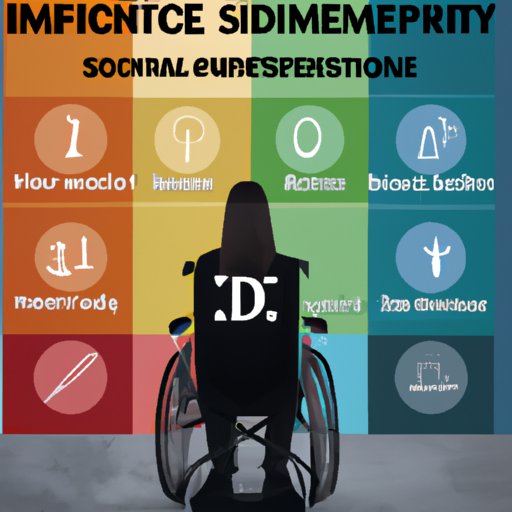Introduction
Mental health disabilities can be debilitating and make it difficult or impossible to work, but there are a number of financial assistance programs available to those who qualify. It is important to understand the differences between the various programs and the eligibility requirements in order to maximize one’s chances of receiving benefits.
The U.S. Social Security Administration (SSA) defines a mental health disability as “a medically determinable mental disorder that results in severe functional limitations.” These disorders include schizophrenia, bipolar disorder, major depression, obsessive-compulsive disorder, and autism spectrum disorder. The SSA also recognizes certain learning disabilities such as dyslexia. In order to qualify for disability benefits, an individual must have a condition that prevents them from engaging in “substantial gainful activity” for at least 12 months.
Social Security Disability Insurance (SSDI) vs. Supplemental Security Income (SSI)
Two of the most common programs for those with mental health disabilities are Social Security Disability Insurance (SSDI) and Supplemental Security Income (SSI). Both of these programs are administered by the SSA, but they have different eligibility criteria and benefits.
In order to be eligible for SSDI, an individual must have worked and paid Social Security taxes for a certain number of years. Additionally, they must have a medical condition that meets the SSA’s definition of disability. Those who qualify for SSDI can receive a monthly cash benefit, as well as Medicare or Medicaid coverage.
SSI, on the other hand, is need-based and does not require an individual to have worked in order to be eligible. However, they must meet certain income and asset limits. Those who qualify for SSI can receive a monthly cash benefit, as well as Medicaid coverage.
Impact of Mental Health Disability on Employment Opportunities
Having a mental health disability can make it difficult to find and maintain employment. According to the National Alliance on Mental Illness (NAMI), individuals with mental illness are twice as likely to be unemployed compared to those without a mental health condition. Furthermore, only 25 percent of adults with mental illness are employed full time.
Those with mental health disabilities may struggle with finding employment due to stigma associated with mental illness, lack of access to resources, and difficulty navigating the job search process. It is important to remember that employers cannot discriminate against individuals with mental health disabilities, and there are steps that can be taken in order to increase one’s chances of finding employment.
These steps include researching potential employers, creating a resume and cover letter that highlight skills and qualifications, and networking with professionals in the industry. Additionally, individuals can seek out vocational rehabilitation services and job training programs in order to gain experience and develop new skills.

Applying for Mental Health Disability Benefits
In order to apply for mental health disability benefits, individuals should first gather all the necessary information and documents. This includes medical records, tax returns, and any other relevant information. Once this has been gathered, individuals should fill out the appropriate application forms and submit them to the SSA.
It is important to note that the application process can take several months or even longer, so it is important to be patient. Additionally, individuals should be prepared to provide additional information if needed and follow up with the SSA if they do not receive a response within a reasonable timeframe.
Insurance Companies’ View of Mental Health Disabilities
Insurance companies view mental health disabilities differently than physical disabilities. While some insurance plans will cover mental health treatment, others may require higher premiums or impose limits on coverage. It is important to research different plans in order to determine which ones offer the best coverage.
Furthermore, individuals should be aware that some insurance companies may deny coverage for pre-existing conditions or refuse to provide coverage for certain types of treatments. It is important to read the fine print of any insurance policy before signing up.

Seeking Professional Help for Mental Health Issues
It is important to seek professional help for mental health issues in order to get the treatment and support needed. Treatment can involve counseling, medication, or other therapies depending on the individual’s needs. It is important to find a qualified professional who is knowledgeable about mental health and can provide the right kind of care.
Additionally, individuals should remember that mental health treatment is not a one-time fix. It requires ongoing effort and commitment, and it is important to stay motivated and keep up with treatment in order to achieve long-term success.
Conclusion
Mental health disability pay can provide financial assistance for those who qualify and help to cover the costs of treatment. It is important to understand the different programs available and the eligibility requirements in order to maximize one’s chances of receiving benefits. Additionally, individuals should be aware of the impact of mental health disabilities on employment opportunities and insurance coverage options. Finally, seeking professional help is essential in order to get the treatment and support needed.
(Note: Is this article not meeting your expectations? Do you have knowledge or insights to share? Unlock new opportunities and expand your reach by joining our authors team. Click Registration to join us and share your expertise with our readers.)
